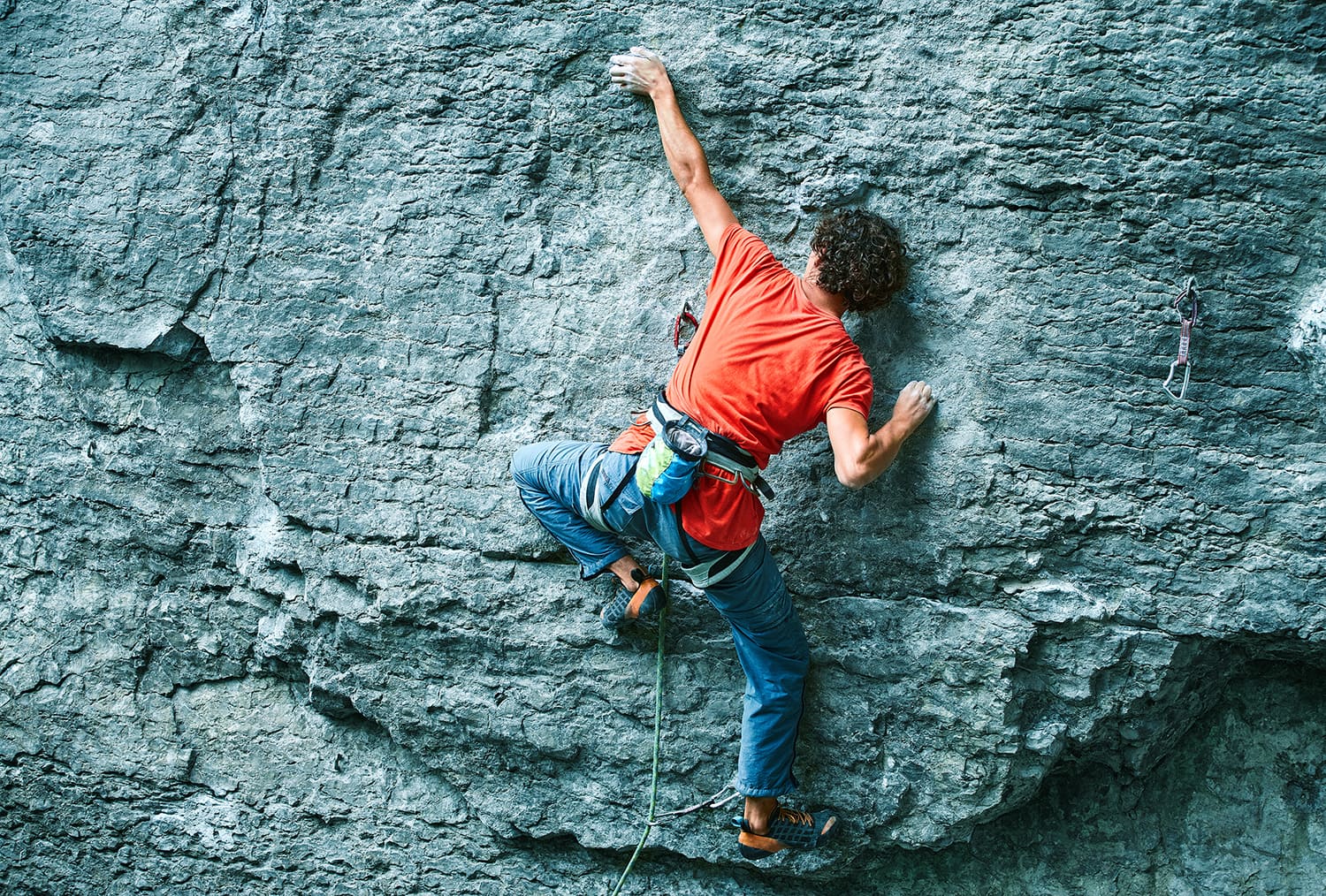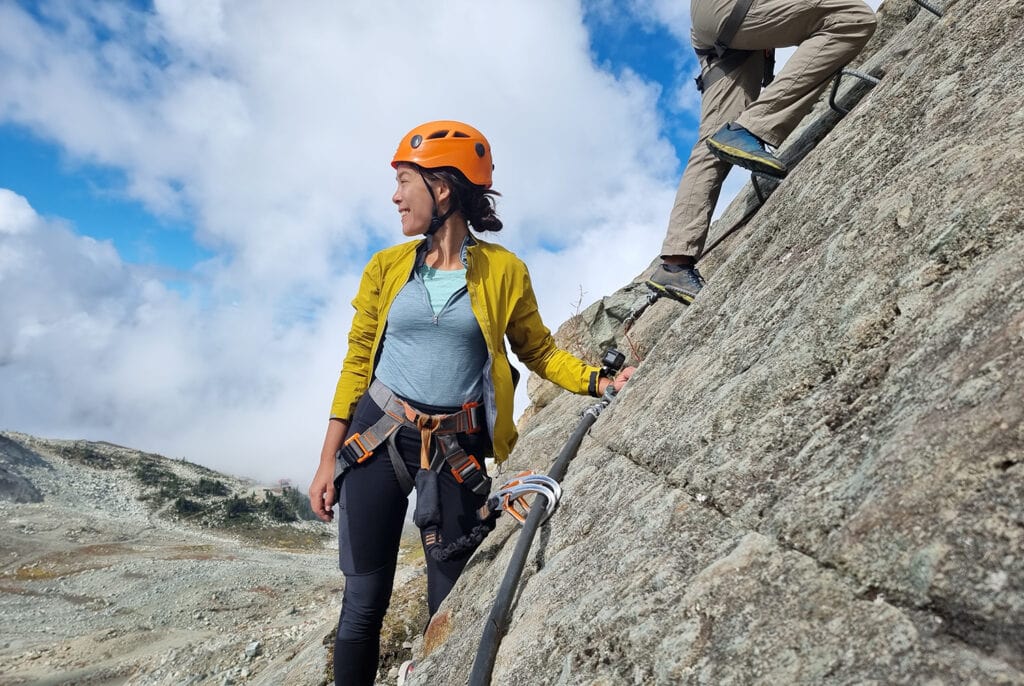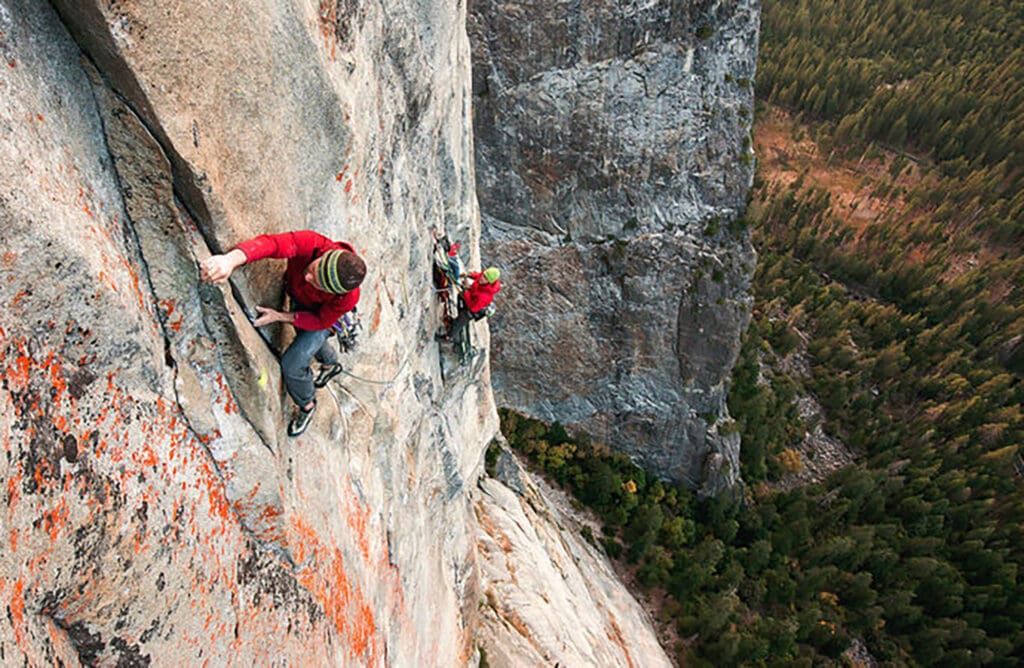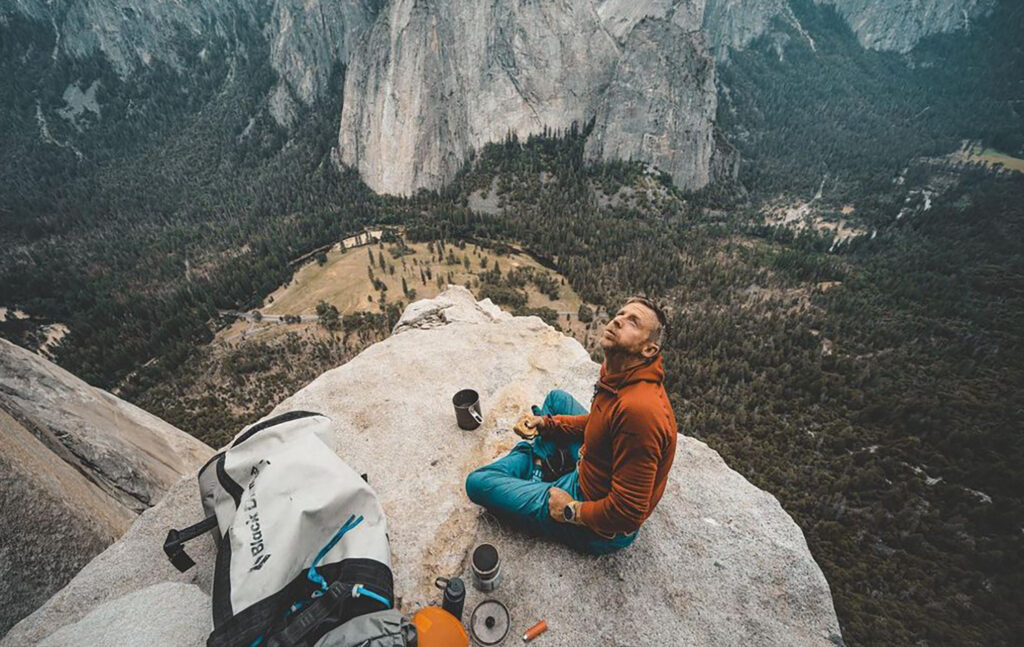How Do Climbers Make Money: 5 Ways (2024)

Published on: 09/22/2022
Climbing’s recent popularity explosion has brought more eyes to the sport than ever before. This creates opportunities for growth in the industry. More rock climbers, more advertising revenue, and more mainstream attention create a greater demand for guides and instructors. And, these factors increase payouts for contests (in theory) and sponsorship deals.
But pro climbers make less than athletes in many other sports. Contest winnings are often just enough to cover flights/accommodation, and shoe sponsorships pay a fraction of those from sports like skateboarding.
Many who want to achieve a reliable income in the climbing community must get creative. We’ve made a list of 5 ways climbers make money.
1. Brand Sponsorship and Social Media Influencing

Though this is the obvious place to start, it’s not as lucrative as you might expect. Larger companies with a worldwide presence, like North Face, Arc Teryx, and Patagonia, can pay an elite, professional climber well.
But up-and-comers will sometimes accept free shoes, clothing, and product as their only form of payment. A typical pro rock climber on the lower rungs will take all the help they can get. Getting shoes from one company, clothing from another, hardware from a third, etc., eases the financial burden of contest travel for pros.
What’s more, contest prizes have remained low despite climbing’s boost in popularity. Many professional climbers make under $10,000 a year from climbing alone. It’s common to see pros crowdfunding their latest effort to get to an international contest. Many will also hold down other jobs to survive.
Marketability
Sponsorship money depends on a number of factors. Climbing strength and talent can get you noticed, but marketability gets you paid. As does business acumen. It’s worth noting that those who can negotiate better deals and recognize opportunities make more than those content with the average dirtbag lifestyle.
Some climbers receive a cheque from a company for wearing specific shoes and equipment. But these payments are often well below a liveable salary. Big name brand sponsors have varying levels of compensation. When an athlete is highly visible, has a unique selling point, and can tell their life-changing stories on talk shows – there’s a lot of money on the table.
Honnold Gets Paid Like a Dentist
Alex Honnold springs to mind here. Although exact figures aren’t available, Honnold has helped us conceptualize his wealth by saying he’s about as wealthy as a moderately successful dentist.
This seems to be about right, with him receiving an estimated annual income of 200-300k. Most of this income comes through his sponsorships.
The actual amount of money he was paid for Free Solo is pretty low. It did, however, launch him to a level of international celebrity that vastly increased his earning potential.
Of Honnold’s sponsors, North Face is in the position to pay the most money. This is because their brand has market penetration outside of hardcore climbers and hikers. The company paying the most money is usually the one selling the most product.
At this level of fame, it’s easy to attract support from multiple brands too. A quick Google search confirms that top-tier rock climbers typically have sponsors for shoes, clothing, hardware, chalk, food, recovery products, etc. But widespread recognition also creates opportunities for a good public speaker.
Social Media Influencing
While more accessible to amateur athletes who are not performing at an elite level, the world of social media influencers is murky. We’re not in a position to say what influencers make on a per-post basis. But the number of YouTube channels, Instagram accounts, and TikTok creators in this space is growing. This suggests that at least a few climbers earn through the major platforms.
Product Placement
Influencers don’t typically divulge their income sources owing to non-disclosure agreements. But various brands in the climbing world pay (either in cash or product) for exposure on accounts with many active followers. We don’t all have to love it. But the age of the social media climber has arrived.
There are channels dedicated to reviewing gear in video format, Instagram accounts showing the latest death-defying feats of professional climbers, and blogs discussing every aspect of the sport (that’s us!). The most recognizable influencers in the space can get paid to post pictures featuring branded goods.
But professional climbers make money from their online presence too. Most professionals have a full array of social media platforms. These provide a perfect platform for marketing various goods, services, and outlets. Some of us don’t love the associated glitz, but the social media age means more professional climbers can earn a decent salary. That can only be good.
2. Contest Money

In some countries, the national sports federation covers most (if not all) of an athlete’s training, travel, and accommodation expenses for contests. These schemes help to produce Olympic champions and international representatives. Unfortunately, the US doesn’t have a system like this.
To make matters worse, prize money for IFSC events is often as low as $2,000. A pro rock climber that needs to take an international flight and book a hotel would be lucky to break even.
And that’s if they win. The international world cup creates problems for competitive rock climbers at the lower end of the income scale. Many put between $5,000 and $10,000 of their own money into travel expenses annually.
3. Entertainment & Show Business
Public Speaking
Climbers like Honnold, Lynn Hill, Tommy Caldwell, Catherine Destivelle, and Chris Sharma are firmly in the category of celebrity. With appearances on talk shows, movies released in theaters, and faces recognizable to those outside the climbing world, these climbing celebrities earn money from large sponsorships and public speaking events.
These public speaking events further enhance the climber’s marketability in the brand’s eyes. However, most rock climbers employed by smaller companies depend on other income while they slowly build their brand. These lower-tier pros also make appearances on a smaller scale. Think local climbing gyms rather than huge, corporate speaking events.
Stunts
Working with a film crew isn’t directly linked to being a sponsored climber, but it’s typically the most famous, recognizable, and best professional climbers that do this work. Stunt doubles are paid to stand in for the film’s actors to film scenes that are too risky for untrained actors.

An example of this kind of work is Adam Ondra in the remake of Point Break. The scene featuring the lead character, Johnny, scaling a cliff is actually Ondra. The late, great Wolfgang Gullich was Sly Stallone’s double in the campy-but-fun 1993 movie, Cliffhanger. Sadly, only the highest-level, most famous climbers make money from Hollywood. And gigs are sporadic at best.
4. Climbing Guides

Becoming an elite professional climber isn’t the only way of making money from rock climbing. Income sources from guiding can (almost) be enough to sustain an average dirtbag cruising through a season. Most climbers have at least considered this kind of work.
At climbing hotspots around the world, there are usually various local companies offering tours. While it can be hard to make a full-time income from being a guide, it does give you a lot of time at the crag. And it can also teach you some valuable life lessons.
The website comparably.com suggests a yearly income of between 26k and 35k for climbing guides in the US. Some people can make that work. For an average rock climbing guide, this works out at around one hundred dollars per day. To make more money as a climbing guide, you’ll need something that helps you stand out.
A tough profession
Working as a rock climbing guide is not a lucrative gig for the average rock climber. How viable a career is in this industry depends on a few factors. Peter Croft, for example, is a successful celebrity guide because of his legendary feats, public speaking, and many published guidebooks. His Fifty Favorite Climbs is a classic of the climbing genre.

The chance to hike and rock climb with a living legend is appealing for climbers everywhere. Understandably, Croft charges more than your average guide. Sherpas are similarly in demand as guides because no one else can endure high altitudes the way they can. Like in any industry, carving out your own niche is the best way to make guiding one’s main paid occupation.
Many part-time guides/full-time dirtbags work a second job in the off-season. Lots of young climbers survive on little income and live off savings while the climbing is good. Most professional climbers have had a phase like this early in their careers. Van life is what the kids are calling these days. It’s not that you can’t make money catering to the tens of thousands of climbers who come to Yosemite, Joshua Tree, Squamish, or the Dolomites every year. But you won’t get rich doing it (except spiritually, maybe). Guides also need to be competent at rock climbing and know the area and routes intimately.
5. Work at a Climbing Gym

You don’t need to be an elite climber to earn a living from your hobby. If you’re passionate about climbing and teaching, working as an instructor at a gym is a possibility. Senior instructors with proven experience (and sometimes qualifications, depending on where) can earn about twenty dollars per hour.
Often, people start out at lower positions in the gym. But the money improves if you stick with it long enough to teach courses or work as a route setter. Lots of climbers earn money from this kind of gig early on in their careers. It’s a great introduction to the climbing world and an opportunity to hone your skills and make connections in the community. And if you really like the work, you could always…
Opening a Climbing Gym
Gyms in populated areas do good business. A recent upswing in the popularity of rock climbing has created a greater need for training facilities. Pros like Chris Sharma and Adam Ondra have gotten in on the action. Sharma has opened gyms in Barcelona, Madrid, and Gave in Spain; Ondra has opened a bouldering center in Brno, the Czech Republic.
These two examples are not typical, though. Ondra and Sharma are two of the biggest names in climbing, and they make money from other income streams. Opening a gym involves a lump investment sum to set up the facilities (including the walls and holds for the routes) and hire staff.
Most gyms (including those with a brand-name climber at the helm) make a lot of their money from day passes, kid’s birthday parties, and corporate events.
A typical gym charges anywhere from $10 to $20 for a day pass. And monthly fees are usually between $75 and $100, which is discounted by about 20% if you take the annual plan. The costs of birthday parties, school tours, and corporate events are harder to estimate. But gym operators love them, so they probably pay well.

Rock climbing centers often boost profits by including a shop and cafe on their premises. Selling shoes, chalk, rope, and gear make sense. There’s about a 40% profit margin on climbing hardware and a 50% markup on soft goods (t-shirts, hats, sweaters, etc.). This is not an especially lucrative retail situation but can contribute to a gym’s bottom line.
Selling food and beverages to rock climbers after their session represents a better business opportunity. The markup on food and drink is way better. And your customers (other climbers) are depleting calories and working up an appetite as they climb on your premises – perfect!
The Beta
Getting paid to climb is a tricky business. Only the top climbers on the planet make a living from their athleticism alone. For most of us, having the time, fitness, and freedom to climb regularly is as good as it gets. But that doesn’t mean you can’t build your life and work around what you love.
If you want to pass time between sessions around other climbers, there are options. We’ve barely scratched the surface with our list. But like with everything else, having a unique angle will take you a long way.





